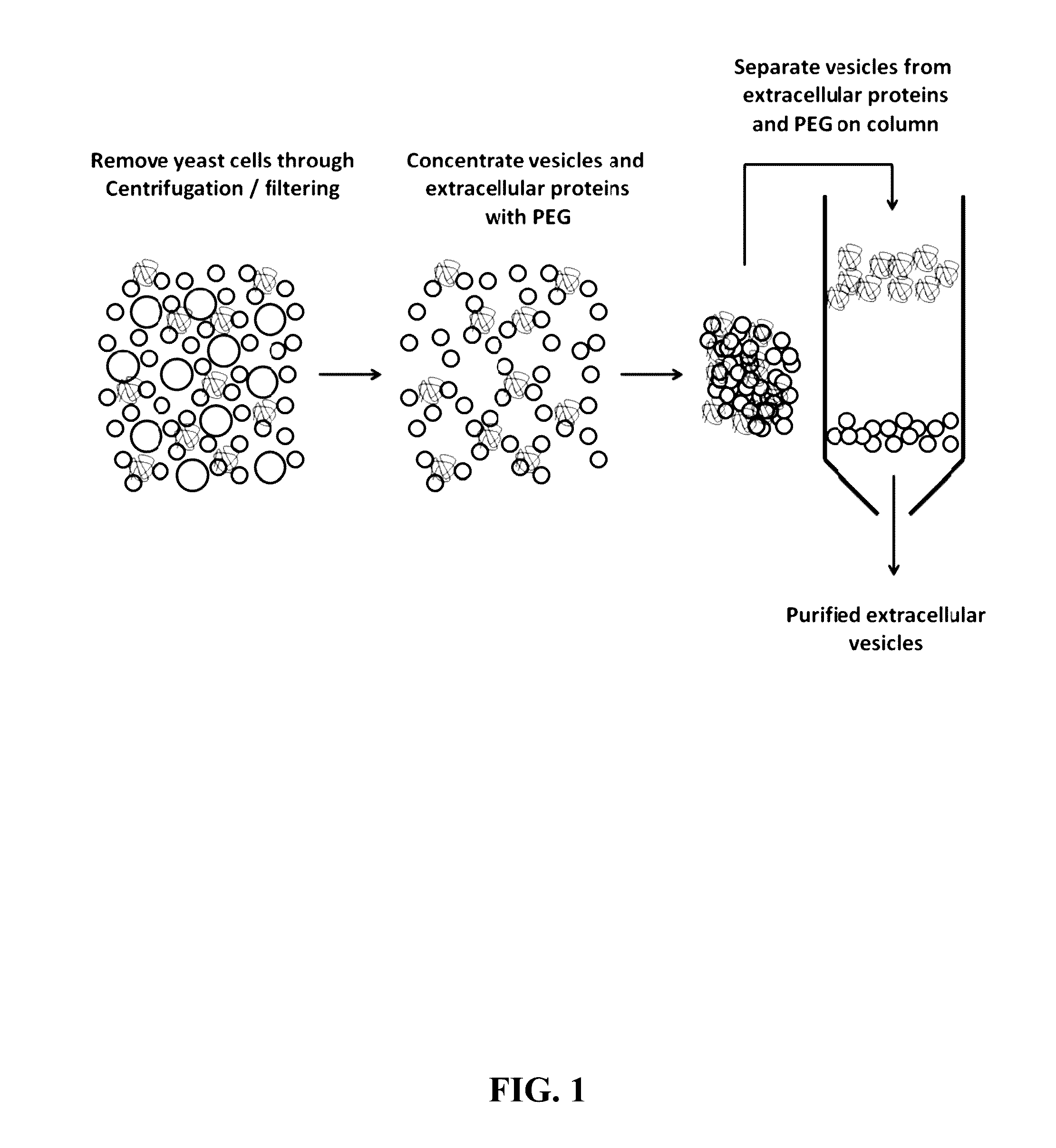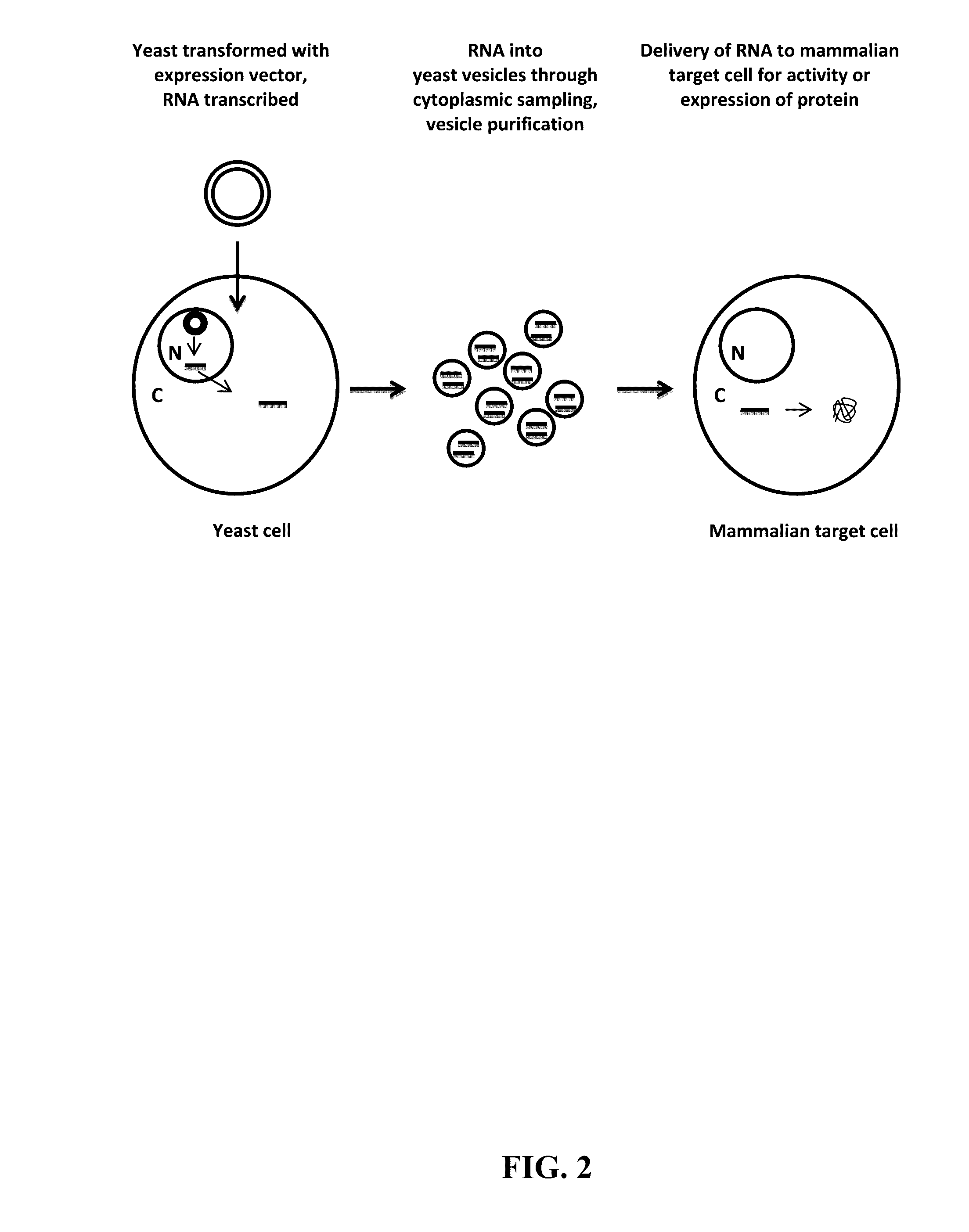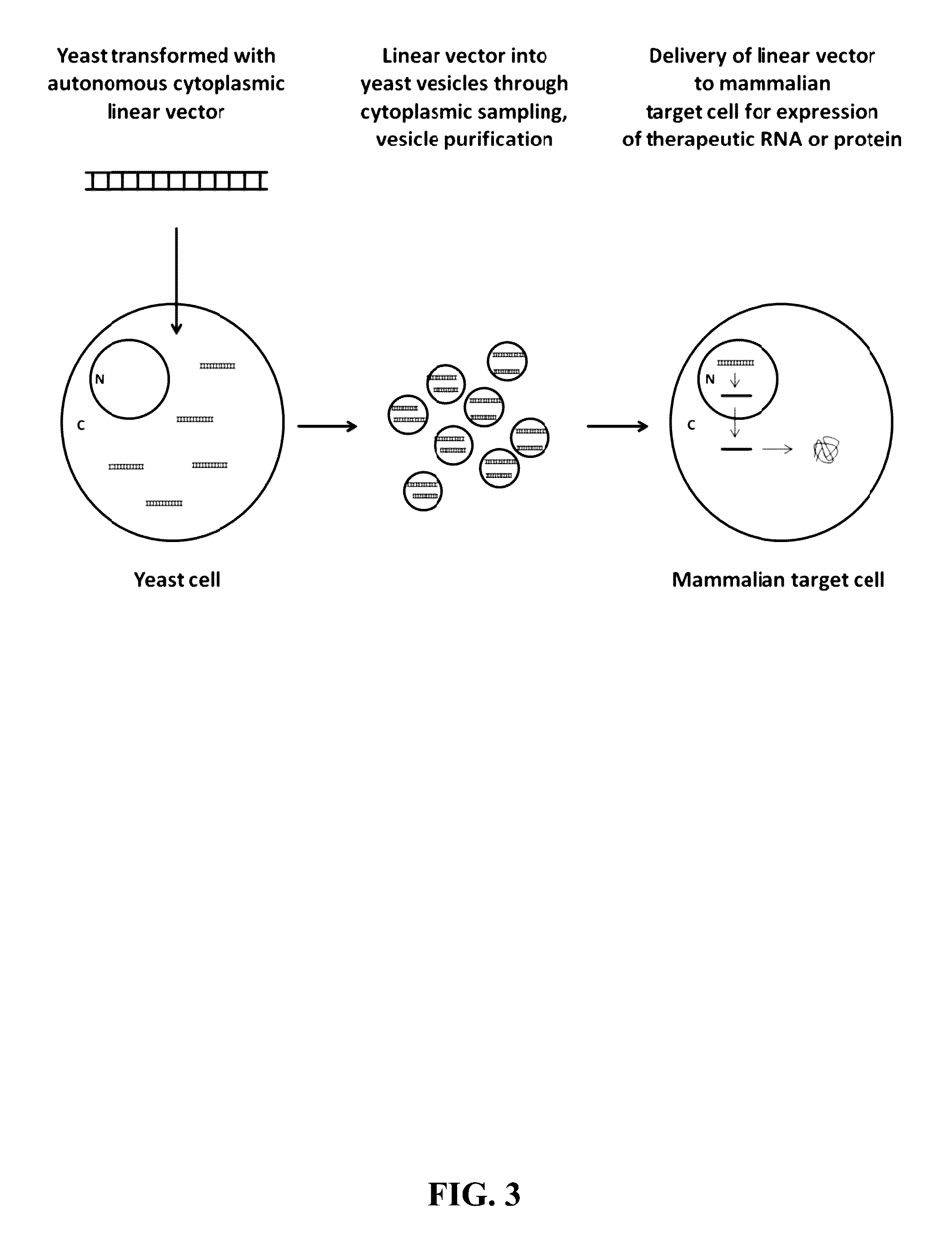Compositions and Methods for Yeast Extracellular Vesicles as Delivery Systems
a technology of extracellular vesicles and delivery systems, applied in the field of biologically active molecules delivery systems, can solve the problems of limited therapeutic window of acceptable drugs, limited application of natural delivery systems, and technical hurdles limiting the application of naturally derived vesicles as delivery vehicles, etc., to achieve a greater range of target molecules, less shrna available, and the effect of affecting gene activity
- Summary
- Abstract
- Description
- Claims
- Application Information
AI Technical Summary
Benefits of technology
Problems solved by technology
Method used
Image
Examples
example 1
Preparation of Yeast Vesicles Loaded with Endogenously Produced RNA for Delivery to Mammalian Cells
[0122]Expression vectors for the endogenously produced RNA are constructed from isolated plasmid backbones and PCR amplified expression cassettes for the biologically active RNA. The expression vector should include at least the following components: an origin of replication for preparation in bacteria, an antibiotic selectable marker for selection in bacteria, an origin of replication for propagation in yeast, a promoter and terminator for expression of the RNA, both of which are appropriate for the yeast strain being used. Non-limiting examples of suitable backbone vectors include those derived from pRS413, pRS414, pRS415, pRS416, pRS423, pRS424, pRS425, pRS426, etc. These plasmid backbones contain a pMB1 / ColE1 origin of replication (from pBR322) and an ampicillin resistance gene allowing the vector to be replicated in bacteria and cultured in the presence of ampicillin. The backbone...
example 2
Preparation of Yeast Vesicles Loaded with an Endogenously Derived Yeast Autonomous Cytoplasmic Linear DNA
[0127]Autonomously replicating yeast cytoplasmic linear plasmids are constructed from isolated plasmid backbones and PCR amplified expression cassettes for the biologically active component. In addition to the proteins encoded by the linear plasmids, which facilitate cytoplasmic replication and gene expression, the expression vector will include a promoter and terminator for expression of the RNA, both of which are appropriate for expression in the mammalian target cells. Examples of suitable linear plasmid backbones include pGKL1 and pGKL2 from Kluyveromyces lactis, pPEII and pPEIB from Pichia etchellsii, pSKL from Saccharomyces kluyveri, pDHIB from Debaryomyces hansenii, pWR1B from Wingea robertsiae, pPac1-1 from Pichia acacia, as well as pPP1 and pPP2 from Pichia pastoris. These plasmid backbones contain elements necessary to maintain the linear plasmids as extra-chromosomal e...
example 3
Preparation of Yeast Vesicles Loaded with Endogenously Produced Circular RNA for Delivery to Mammalian Cells
[0130]Expression vectors for the endogenously produced circular RNA are constructed from isolated plasmid backbones and PCR amplified expression cassettes for the biologically active RNA as described in Example 1. The expression vector should include at least the following components: an origin of replication for preparation in bacteria, an antibiotic selectable marker for selection in bacteria, an origin of replication for propagation in yeast, a promoter and terminator for expression of the RNA, both of which are appropriate for the yeast strain being used, as well as sequences that direct the formation of the circular RNA. Expression cassettes for the biologically active RNA or the mRNA transcript encoding the biologically active polypeptide are prepared by annealing DNA oligos, in the case of small RNAs, or by PCR amplification of the relevant sequences from cDNA clones, i...
PUM
| Property | Measurement | Unit |
|---|---|---|
| Composition | aaaaa | aaaaa |
Abstract
Description
Claims
Application Information
 Login to View More
Login to View More - R&D
- Intellectual Property
- Life Sciences
- Materials
- Tech Scout
- Unparalleled Data Quality
- Higher Quality Content
- 60% Fewer Hallucinations
Browse by: Latest US Patents, China's latest patents, Technical Efficacy Thesaurus, Application Domain, Technology Topic, Popular Technical Reports.
© 2025 PatSnap. All rights reserved.Legal|Privacy policy|Modern Slavery Act Transparency Statement|Sitemap|About US| Contact US: help@patsnap.com



